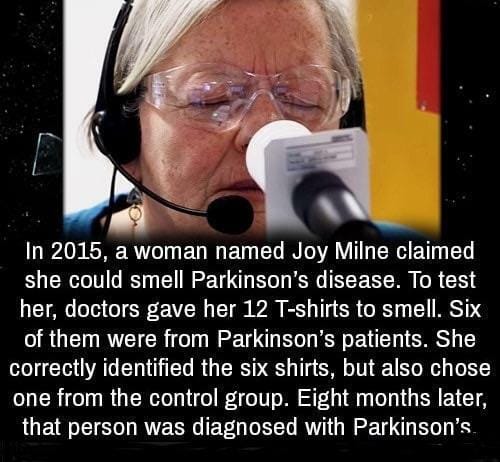Machine Learning Will Capture the ‘Je Ne Sais Quoi’ of Human Existence

Published: April 19, 2019
Human genius has always been something of a mystery.
Experts often cannot articulate how they know someething to be true.
When a world-class chef smells something—crinkles his nose and says it’s not right—there’s a good chance he doesn’t know what’s wrong with it. Malcolm Gladwell told us the story of an art expert who knew instantly that a certain piece was fake—but she was unable to give any reasons for this assessment. And it takes both training and experience for a terrorism expert to look at a city street and know if danger is imminent.
It’s often said that true geniuses tend to be bad at teaching their craft.
This gap between knowing and explaining gives the elite among us a magical aura. It’s as if the best among us are tapping into a river of divine knowledge, and they’re given the ability to execute—but not to understand.
When something has a hidden element that makes it special, we often use the French phrase, "Je Ne Sais Quoi"—which means, "that certain something…"
But science is now telling a different story—a more antiseptic tale of opacity and complexity. It tells us that we have one mind that does things automatically, and another that thinks slowly and rationally. It says the automatic part has access to more information, which it uses to make decisions before (and even without) our awareness.

They actually told her she got one wrong, but that patient turned out later to have the disease as well.
Another example of this is a woman named Joy Milne, who could smell Parkinson’s Disease. She smelled the shirts of 12 people and identified who had the disease before doctors could do so any other way.
But could she tell the doctors what she was smelling? No.
Just like a fighter can’t tell you exactly when they’re going to attack—or a veteran pilot can’t tell you why they’re making a thousand micro-adjustments while making a difficult landing—the answers simply appeared to them unconsciously, and they either reacted or answered without understanding the source.
So rather than wielding it, the best in the world experience their greatness, much like people watching from the outside. Their brains parse more sensory inputs than they can possibly have awareness of—faster than they can keep track of—and then produce answers that they often can’t explain.
The best in the world experience their genius more than they wield it.
Algorithms are also using graytone-sensitve cameras to detect cancer better than human experts.
The combination of multiple sensor types with machine learning will allow us to find patterns far more numerous and subtle than humans can find on their own. Just as dogs can smell drugs better than us, and Joy Milne can detect Parkinson’s better than most humans, the combination of spectral analyzers and ML will likely be able to "smell" many other diseases by simply observing your dirty clothes.
Sure, but why does this matter?
There are many who still see machine learning as statistics with an attitude, or as something that’s novel and noteworthy but not useful in everyday life.
First, we need to understand that the modern era for ML has just begun. Machine Learning goes back to the 1960’s, but never saw much practical success or attention until DeepBlue beat Kasparov in 1997. And even then we still thought it was nearl impossible to automatically identify objects within images.
It’s only within the last 10 years that we’ve made object recognition so approachable, beaten humans at Go, Poker, complex strategic video games, and developed the ability to generate realistic-looking human faces in real-time.
Get a weekly breakdown of what's happening in security and tech—and why it matters.
10 years, out of the 200,000 of our species, and the 150 of our scientific awakening. That’s a blip of extraordinary advancement.

Second—and much more important—is the fact that there are many things AI will be able to analyze that have always been elusive to humans. Things that matter.
Is this person lying to me?
Is this a good business deal?
Should I date this person?
Which city should I move to based on my values and skills?
What career should I recommend for my daughter?
What policy change would produce an economy that helps the most people?
Some of these questions can be answered by human experts, but the more complex the question the more questionable their accuracy.
It’d be like Joy Milne smelling 100,000 shirts at once, looking for 1,000 different diseases. When things become sufficiently complex, human sensory input and processing power become overwhelmed—resulting either no answer, or—and often much worse—the wrong answer.

The power of prediction within chaos
The most useful part of ML will likely be allowing us to glimpse the future in the form of real-time analysis and predictions. There are millions of situations where we as humans only get to guess about things that really matter, and ML will help us see deeper into those situations to make better decisions.
The "why" piece is harder right now, but there are promising paths for making the variables more transparent.
The chances of a start-up failing (and why)
How long is this relationship likely to last given our respective profiles?
The odds that someone is lying based on their tone of voice, facial expressions, and body language
The chances that a given street is dangerous, and adjust the recommended route accordingly
The chances that a contractor is likely to collect and steal internal documents from an organization
Predicting health outcomes given your current behavior
Chances of a given product in the field to fail within a certain time period
In short, the promise of Machine Learning is being able to capture not only what human and animal experts can currently do, but also to take that to an Nth level using the power of sensor technology and computing. The sensors provide an ocean of new inputs, with far more chances to find patterns, and the computing resources allow us to process all those new variables at blinding speed.
ML will allow us to see patterns and truths in daily life that would have otherwise been invisible.
It’s not about finding random patterns that nobody cares about. It’s about finding that certain "I don’t know what" in a business, product, interaction—that gives you the insight you need to make the best decision.